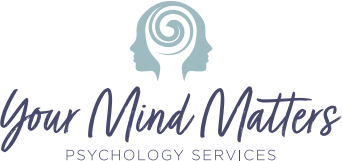Anxiety is a normal part of children’s development, but children and teenagers with a diagnosis of autism spectrum disorder (ASD) can experience anxiety more intensely and more often than other children.
Anxiety or autism spectrum disorder?
Children with autism spectrum disorder (ASD) feel many of the same worries and fears as other children. But when children and teenagers with ASD get worried or anxious, the way they show their anxiety can look a lot like common characteristics of ASD – stimming, obsessive or ritualistic behaviour, and resistance to changes in routine.
How anxiety affects children and teenagers with autism spectrum disorder:
The world can be a confusing place for children and teenagers with ASD. They might find social or unfamiliar situations overwhelming and hard to understand. They often have difficulty working out what another person might be thinking or feeling, or how that person might react. As a result, people and situations can seem unpredictable, which can make children feel stressed and anxious.
On top of that, children and teenagers with ASD, especially younger children, might have trouble telling you that they’re feeling anxious. Instead, you might notice an increase in challenging behaviour.
For example, your anxious child might:
- insist even more on routine and sameness
- have more trouble sleeping
- have meltdowns or temper tantrums
- avoid or withdraw from social situations
- rely more on obsessions and rituals, like lining up or spinning objects
- stim by rocking, spinning or flapping hands
- do things to hurt themselves, like head-banging, scratching skin or hand-biting.
REDUCING ANXIETY AND MANAGING ANXIETY FOR YOUR CHILD WITH AUTISM SPECTRUM DISORDER:
Anxiety is a natural part of life and something that everyone experiences at some stage.
You’ll never be able to get rid of everything that causes anxiety or stress for your child, though you will try! But there are some things you can do to help ease your child’s worries, and encourage them to manage his own anxiety levels.
Find out what makes your child anxious
Because children and teenagers with ASD can have trouble with understanding and communicating emotions, you might need to read your child’s signals and work out what makes them feel anxious or stressed.
Some of the common triggers for anxiety in children with ASD include:
- changes in routine – for example, a weekly piano lesson gets cancelled because the teacher is sick
- changes in environment – for example, furniture in your home gets moved, there’s new play equipment at the local park, or you move house
- unfamiliar social situations – for example, a birthday party at an unfamiliar house
- sensory sensitivities – for example, sensitivities to particular noises, bright lights, specific flavours or food textures
- fear of a particular situation, activity or object – for example, sleeping in their own bed, going to the toilet, balloons or vacuum cleaners.
Once you’ve worked out some of the things that make your child feel anxious, it can help to make a list of them, so that you can find ways to help your child manage these situations.
Give your child lots of opportunities to practice dealing with these things and situations in safe environments.
It helps if other people who look after your child – for example, child care workers, teachers and family members – also know what makes your child feel anxious and what they can do to help him with managing anxiety in these situations.
Sensory needs
Children with ASD may have a range of sensory needs. They might experience sensory input in one or more of the seven senses differently.
Think about situations where there is a lot of sensory information, which can exacerbate their anxiety levels. Consider the food court in a shopping mall, where there are:
- crowds of people
- different food smells
- lots of noise such as chatting, laughing, chairs scraping and cutlery clanging
- foods with different tastes and textures
- tables, chairs and groups of pupils that make it difficult for you to move through the hall.
This can be an overwhelming place for a child or young person on the autism.
If you think you can change the environment to reduce overstimulation, do!
Help your child recognise anxious feelings
Your child might need to be taught what anxiety is and what it feels like in her body. For example, when they feels anxious their palms get sweaty, their heart beats faster, and they engage in a stimming behaviour.
You could try drawing an outline of a person’s body. Inside the outline, help your child draw or write what happens in each part of his body when he feels scared or worried.
Quick tips to help children with ASD manage anxiety
Here are some ways you can help:
- make sure you prepare them for any change to their routine
- think about how you can adapt the environment
- use visual supports and timetables
- try social stories or comic strip conversations to develop social understanding
- use a stress scale to help them identify changes in emotions offer a safe and quiet place where they can go to get away from social pressures
- have lunch time clubs where they can spend time with others who have similar interests.
Use relaxation and calming strategies
Your child might also need to learn what she can do to calm down. You can help your child come up with a toolbox of ways to help herself calm down when she starts feeling anxious or stressed. These might be:
- counting slowly to 10
- taking five deep breaths
- running around the yard five times
- doing 50 jumps on the trampoline
- looking at a collection of favourite or special things
- reading a favourite book
- closing eyes for a few moments
- going to a quiet part of the house.
Get your child to practice these strategies when they’re calm. Once they knows the strategies well, you can gently guide them to try them when he feels anxious.
Getting help with managing your child’s anxiety
A psychologist might be able to help if your child with autism spectrum disorder (ASD) is very anxious. Psychologists have specialised training in mental health conditions, and can work directly with your child and family to develop strategies for reducing anxiety.
Psychologists use a range of approaches, including:
- cognitive behaviour therapy – this helps children develop skills to change their thinking in situations that make them anxious
- interventions using gradual exposure to help children face their fears – for example, the stepladder approach
- Social Stories– these can help prepare children for unfamiliar or stressful situations that generally make them anxious
- relaxation training to help your child learn to relax.
You can ask your GP or Paediatrician to recommend a psychologist.
Medication can also help reduce anxiety symptoms in children with ASD. It’s usually recommended only when anxiety is affecting a child’s everyday life and behaviour strategies haven’t reduced the anxiety enough. You can speak to your GP or Paediatrician about this option.
The above information were obtained from the following sources. The full articles may be found on:
http://raisingchildren.net.au/articles/autism_spectrum_disorder_anxiety.html
http://www.autism.org.uk/professionals/teachers/classroom/understanding-anxiety.aspx
Parents of children with ASD may find the following resource beneficial:
https://ed-psych.utah.edu/school-psych/_documents/grants/autism-training-grant/Anxiety-PP.pdf
 |
This blog was written by Dr Aiyuen (Shannon) Choong, Psychologist at Your Mind Matters. Aiyuen is fluent in English and Mandarin, and is passionate about working with children from preschool years through to adolescence. To learn more about Aiyuen, click here. |
